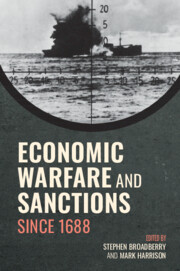Refine search
Actions for selected content:
26944 results in Economic history

Philip II of Spain and the Power of Money
- Between Parliament and Bankers
- Coming soon
-
- Expected online publication date:
- April 2026
- Print publication:
- 30 April 2026
-
- Book
- Export citation
Ottoman Reform at Work
- Class, Migration, and Coercion in the Imperial Arsenal
- Coming soon
-
- Expected online publication date:
- March 2026
- Print publication:
- 30 April 2026
-
- Book
- Export citation

Liberty, Solidarity and Community
- Capitalism and European Integration, 1945 to the Present
- Coming soon
-
- Expected online publication date:
- February 2026
- Print publication:
- 28 February 2026
-
- Book
- Export citation
The Cambridge Economic History of Modern South Asia
- Coming soon
-
- Expected online publication date:
- February 2026
- Print publication:
- 31 January 2026
-
- Book
- Export citation

The Cambridge Companion to the History of Multinationals and Society
- Coming soon
-
- Expected online publication date:
- February 2026
- Print publication:
- 28 February 2026
-
- Book
- Export citation
Monetary Policy Implementation
- Coming soon
-
- Expected online publication date:
- February 2026
- Print publication:
- 31 January 2026
-
- Element
- Export citation

Aristippus of Cyrene, Pleasure and the Present
- Coming soon
-
- Expected online publication date:
- January 2026
- Print publication:
- 31 January 2026
-
- Element
- Export citation
Design, Production and After-lives
- Three Godrej Objects and the History of Modern India
- Coming soon
-
- Expected online publication date:
- January 2026
- Print publication:
- 01 May 2027
-
- Book
- Export citation

The Cambridge Economic History of Modern South Asia
- Coming soon
-
- Expected online publication date:
- January 2026
- Print publication:
- 31 January 2026
-
- Book
- Export citation

Slavery, Freedom, and Development
- How Africa Became the Mirror Image of Europe
- Coming soon
-
- Expected online publication date:
- January 2026
- Print publication:
- 31 January 2026
-
- Book
- Export citation
Why the Rush?
- An Institutional Economic Analysis of Homesteading and the Settlement of the West
- Coming soon
-
- Expected online publication date:
- December 2025
- Print publication:
- 31 December 2025
-
- Book
- Export citation

Economic Warfare and Sanctions Since 1688
- Coming soon
-
- Expected online publication date:
- December 2025
- Print publication:
- 18 December 2025
-
- Book
- Export citation

Empires of Labor
- Coercion and the Making of the Modern World
- Coming soon
-
- Expected online publication date:
- November 2025
- Print publication:
- 18 December 2025
-
- Book
- Export citation

The Power of Peasant Consumers
- The Material Culture of Food in the Late Medieval Kingdom of Valencia
- Coming soon
-
- Expected online publication date:
- November 2025
- Print publication:
- 11 December 2025
-
- Book
- Export citation
References
-
- Book:
- Debts Unpaid
- Published online:
- 04 November 2025
- Print publication:
- 20 November 2025, pp 275-296
-
- Chapter
- Export citation
Introduction
-
- Book:
- Debts Unpaid
- Published online:
- 04 November 2025
- Print publication:
- 20 November 2025, pp 1-19
-
- Chapter
- Export citation
Conclusion
-
- Book:
- Debts Unpaid
- Published online:
- 04 November 2025
- Print publication:
- 20 November 2025, pp 213-218
-
- Chapter
- Export citation
Notes
-
- Book:
- Debts Unpaid
- Published online:
- 04 November 2025
- Print publication:
- 20 November 2025, pp 219-274
-
- Chapter
- Export citation
Copyright page
-
- Book:
- Debts Unpaid
- Published online:
- 04 November 2025
- Print publication:
- 20 November 2025, pp iv-iv
-
- Chapter
- Export citation
5 - Asking for Help
-
- Book:
- Debts Unpaid
- Published online:
- 04 November 2025
- Print publication:
- 20 November 2025, pp 168-212
-
- Chapter
- Export citation
